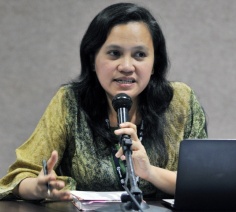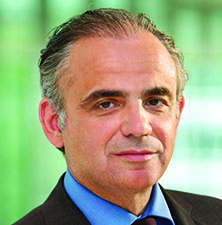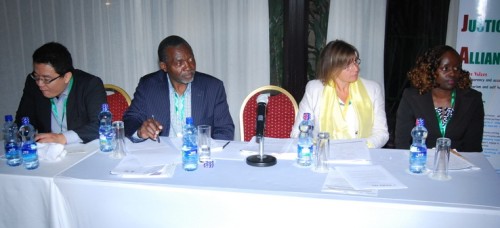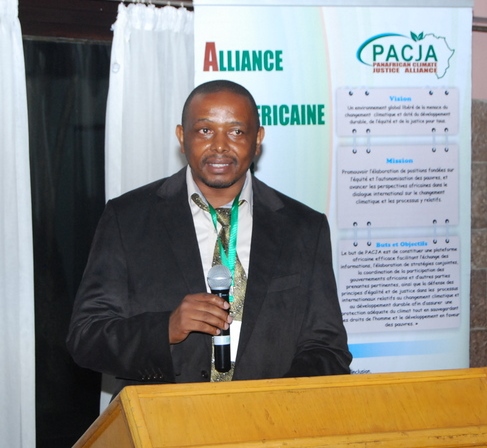The war against genetically modified organisms is full of fearmongering, errors, and fraud, writes William Saletan in a recent edition of Slate (www.slate.com). Saletan, a politics, science and technology writer, insists that labelling them will not make mankind safer

They Want You to Be Overwhelmed
Is genetically engineered food dangerous? Many people seem to think it is. In the past five years, companies have submitted more than 27,000 products to the Non-GMO Project, which certifies goods that are free of genetically modified organisms. Last year, sales of such products nearly tripled. Whole Foods will soon require labels on all GMOs in its stores. Abbott, the company that makes Similac baby formula, has created a non-GMO version to give parents “peace of mind.” Trader Joe’s has sworn off GMOs. So has Chipotle.
Some environmentalists and public interest groups want to go further. Hundreds of organisations, including Consumers Union, Friends of the Earth, Physicians for Social Responsibility, the Center for Food Safety, and the Union of Concerned Scientists, are demanding “mandatory labelling of genetically engineered foods.” Since 2013, Vermont, Maine, and Connecticut have passed laws to require GMO labels. Massachusetts could be next.
The central premise of these laws—and the main source of consumer anxiety, which has sparked corporate interest in GMO-free food—is concern about health. Last year, in a survey by the Pew Research Center, 57 percent of Americans said it’s generally “unsafe to eat genetically modified foods.” Vermont says the primary purpose of its labelling law is to help people “avoid potential health risks of food produced from genetic engineering.” Chipotle notes that 300 scientists have “signed a statement rejecting the claim that there is a scientific consensus on the safety of GMOs for human consumption.” Until more studies are conducted, Chipotle says, “We believe it is prudent to take a cautious approach toward GMOs.”
The World Health Organisation, the American Medical Association, the National Academy of Sciences, and the American Association for the Advancement of Science have all declared that there’s no good evidence GMOs are unsafe. Hundreds of studies back up that conclusion. But many of us don’t trust these assurances. We’re drawn to sceptics who say that there’s more to the story, that some studies have foundrisks associated with GMOs, and that Monsanto is covering it up.
I’ve spent much of the past year digging into the evidence. Here’s what I’ve learned. First, it’s true that the issue is complicated. But the deeper you dig, the more fraud you find in the case against GMOs. It’s full of errors, fallacies, misconceptions, misrepresentations, and lies. The people who tell you that Monsanto is hiding the truth are themselves hiding evidence that their own allegations about GMOs are false. They’re counting on you to feel overwhelmed by the science and to accept, as a gut presumption, their message of distrust.
Second, the central argument of the anti-GMO movement—that prudence and caution are reasons to avoid genetically engineered, or GE, food—is a sham. Activists who tell you to play it safe around GMOs take no such care in evaluating the alternatives. They denounce proteins in GE crops as toxic, even as they defend drugs, pesticides, and non-GMO crops that are loaded with the same proteins. They portray genetic engineering as chaotic and unpredictable, even when studies indicate that other crop improvement methods, including those favored by the same activists, are more disruptive to plant genomes.
Third, there are valid concerns about some aspects of GE agriculture, such as herbicides, monocultures, and patents. But none of these concerns is fundamentally about genetic engineering. Genetic engineering isn’t a thing. It’s a process that can be used in different ways to create different things. To think clearly about GMOs, you have to distinguish among the applications and focus on the substance of each case. If you’re concerned about pesticides and transparency, you need to know about the toxins to which your food has been exposed. A GMO label won’t tell you that. And it can lull you into buying a non-GMO product even when the GE alternative is safer.
If you’re like me, you don’t really want to wade into this issue. It’s too big, technical, and confusing. But come with me, just this once. I want to take you backstage, behind those blanket assurances about the safety of genetic engineering. I want to take you down into the details of four GMO fights, because that’s where you’ll find truth. You’ll come to the last curtain, the one that hides the reality of the anti-GMO movement. And you’ll see what’s behind it.
The Papaya Triumph
Twenty years ago Hawaiian papaya farmers were in trouble. Ringspot virus, transmitted by insects, was destroying the crop. Farmers tried everything to stop the virus: selective breeding, crop rotation, quarantine. Nothing worked. But one scientist had a different idea. What if he could transfer a gene from a harmless part of the virus, known as the coat protein, to the papaya’s DNA? Would the GE papaya be immune to the virus?
The scientist, Dennis Gonsalves of Cornell University, got the idea, in part, from Monsanto. But Monsantowasn’t interested in papaya. Although papaya is an important staple in the developing world, it isn’t a big moneymaker like soybeans or cotton. So Monsanto and two other companies licensed the technology to an association of Hawaiian farmers. The licenses were free but restricted to Hawaii. The association provided the seeds to farmers for free, and later at cost.
Today the GE papaya is a triumph. It saved the industry. But it’s also a cautionary tale. The papaya, having defeated the virus, barely survived a campaign to purge GE crops from Hawaii. The story of that campaign teaches a hard lesson: No matter how long a GMO is eaten without harming anyone, and no matter how many studies are done to demonstrate its safety, there will always be sceptics who warn of unknown risks.
In 1996 and 1997, three federal agencies approved the GE papaya. The U.S. Department of Agriculture reported “no deleterious effects on plants, nontarget organisms, or the environment” in field trials. The Environmental Protection Agency pointed out that people had been eating the virus for years in infected papaya. “Entire infectious particles of Papaya Ringspot Virus, including the coat protein component, are found in the fruit, leaves and stems of most plants,” the EPA observed. The agency cited the long history of mammalian consumption of the entire plant virus particle in foods, without causing any deleterious human health effects. Virus-infected plants currently are and have always been a part of both the human and domestic animal food supply and there have been no findings which indicate that plant viruses are toxic to humans and other vertebrates. Further, plant viruses are unable to replicate in mammals or other vertebrates, thereby eliminating the possibility of human infection.
These arguments didn’t satisfy everyone. In 1999, a year after the new papaya seeds were released to farmers, critics said the viral gene might interact with DNA from other viruses to create more dangerous pathogens. In 2000, vandals destroyed papaya trees and other biotech plants at a University of Hawaii research facility, calling the plants “genetic pollution.” In 2001 the U.S. Public Interest Research Group identified Hawaii as the state most commonly used for outdoor GE crop tests, and it called for a nationwide moratorium on such tests. “The science of genetic engineering is radical and new,” said U.S. PIRG, and GE crops had “not been properly tested for human health or environmental impact.”
A Dutch study published in December 2002 seemed to vindicate this anxiety. According to the paper, a short stretch of the ringspot virus coat protein, now incorporated in the GE papaya, matched a sequence in an allergenic protein made by worms. The resemblance was only partial, and, as the authors noted, it didn’t show that the protein triggered allergies, much less that the papaya did so. But anti-GMO activists didn’t wait. The Institute of Science in Society published a “Biosafety Alert” titled “Allergenic GM Papaya Scandal.” Greenpeace flagged the Dutch study and warned that “the interaction of GE papaya with other viruses … can produce new strains of viruses.” The organization accused the papaya’s developers of “playing with nature.”
Some of these early alarms were disconcerting. But scientifically, they made no sense. Start with the distinction between “nature” and “genetic pollution.” Nature had invented the ringspot virus. Millions of people had eaten it without any reports of harm. And breeders had been tinkering with nature for millennia.
Anti-GMO activists decried genetic engineering as imprecise and random. They ignored the far greater randomness of mutation in nature and the far greater imprecision of traditional breeding. Furthermore, after five years of commercial sale and consumption, there was no sign that GE papayas had hurt anyone. But the alarmists continued to fret about unforeseen interactions and doomsday mutations, ignoring research that didn’t bear out these fantasies.
Take the “Allergenic GM Papaya Scandal.” The protein made by the papaya’s new gene consisted of about280 amino acids. Out of that 280, the number of consecutive amino acids it shared with a putative allergen was six. By this standard, a study found that 41 of 50 randomly selected proteins in ordinary corn would also have to be declared allergenic. But GMO opponents ignored this study. They also ignored a second paper, which concluded that the putative worm allergen used in the papaya comparison was not, in fact, intrinsically allergenic.
Years passed, people ate papayas, and nothing bad happened. But the activists wouldn’t relent. In 2004, Greenpeace vandals tore up a GE papaya orchard in Thailand, calling the plant a “time bomb” and claiming that it had devastated farmers in Hawaii. In 2006, Greenpeace issued another report condemning the fruit. In reality, the source of farmers’ troubles was Greenpeace itself. The organisation was working to blockregulatory approval and sales of the GE papaya—and then blaming the papaya for farmers’ financial woes.
From 2006 to 2010, USDA scientists, prodded by Japanese regulators, subjected the papaya to several additional studies. They verified that its new protein had no genetic sequence in common with any known allergen, using the common standard of eight consecutive amino acids rather than six. They demonstrated that the protein, unlike allergens, broke down in seconds in gastric fluid. They found that conventional virus-infected papayas, which people had been eating all along, had eight times as much viral protein as the GE papaya. In May 2009, after a decade of scrutiny, Japan’s Food Safety Commission approved the GE papaya. Two years later, after resolving environmental questions, Japan opened its market to the fruit.
Chinese researchers performed additional tests. For four weeks they fed GE papayas to a group of rats. Meanwhile, they fed conventional papayas to another group of rats. The study found no resulting differences between the rats. It confirmed that coat protein fragments dissolved quickly in gastric fluid and left no detectable traces in organs.
By this point the GE papaya had been investigated and eaten for 15 years. GMO sceptics had two choices. They could acknowledge that their nightmares hadn’t come true. Or they could reject the evidence and cling to their faith in a GMO apocalypse.
That dilemma split the anti-GMO camp in 2013, when the Hawaii County Council, which governed Hawaii’s largest island, considered legislation to ban GE crops. The council’s hearings, preserved on video by Occupy Hawaii (which favoured the proposed ban), document a yearlong struggle between ideology and science. As council members heard testimony and studied the issue, they learned that the GE papaya didn’t fit GMO stereotypes. It had been created by public-sector scientists, not by a corporation. It had saved a beloved crop. It had passed extensive scrutiny in Japan and the U.S. It didn’t cross-pollinate nearby fields. It also reduced pesticide use, because farmers no longer had to exterminate the aphids that spread the virus.
One council member, Margaret Wille, yielded to the evidence. Wille was Hawaii’s leading anti-GMO politician. She had introduced the proposed GMO ban. But after listening to the arguments, she exempted the GE papaya from her bill, noting that it was embedded in local agriculture and had been vetted in safety and cross-pollination tests. In effect, she acknowledged two things. First, the legitimate worries of biotech critics, such as pesticide use and corporate control of agriculture, didn’t apply to all GE crops. And second, with the passage of time, novelties became conventional.
Other antagonists held their ground. Chief among them was Jeffrey Smith, the world’s most prolific anti-GMO activist. In September 2013, Smith was given 45 minutes to testify before the council as an expert witness, though he had no formal scientific training. (When he was asked whether he should be addressed as Dr. Smith, he sidestepped the question by answering, “No, Jeffrey’s fine.”) Smith told the council that RNA from the GE papaya might disrupt genes in people and that proteins from the papaya might interfere with human immunity, leading to HIV and hepatitis. He also said the protein might cause cancer.
To support his testimony, Smith cited a March 2013 paper about regulation of GE crops. He said the paper “showed that the evaluation of this technology is sorely inadequate to protect against environmental problems and human health problems. And the papaya was one example cited in that study.” But the paper made no claim about papayas. It simply listed them in a table of GE crops, alongside a theoretical critique of the technology.
Smith told the council that “there hasn’t been any animal feeding studies on the papaya.” Hector Valenzuela, a University of Hawaii crop specialist who also testified as an expert, said the same thing: that scientists hadn’t “conducted a single study” to assess the safety of GE papaya. Neither man mentioned the Chinese papaya feeding study in rats—published two months before the theoretical paper Smith had cited—which had found none of the harms Smith alleged.
To explain why scientific organizations and regulatory agencies had declared GE foods safe, the anti-GMO witnesses offered conspiracy theories. They said the Food and Drug Administration had been captured by Monsanto. So had the American Association for the Advancement of Science. When the New York Times’ Pulitzer Prize-winning science reporter Amy Harmon detailed the safety evidence behind the GE papaya, incredulous council members dismissed her article as a “skewed” account by “the political powers that be.”
As for Japan’s approval of the papaya, Valenzuela advised the council to look at U.S. government cables released by WikiLeaks. He said the cables showed “the lengths that the State Department goes to twist arms behind the scenes.” This was a clear insinuation that U.S. officials had coerced Japan’s decision. Smith mentioned the cables, too. But the cables showed no conspiracy. Nearly 6,000 of the leaked cables had been sent from U.S. embassies and consulates in Japan. They covered the years 2005 to 2010, during which Japanese regulators had debated and approved the GE papaya. Food & Water Watch, an environmental group, had searched the cables for references to pressure or lobbying by U.S. officials on behalf of GMOs. The group’s report, issued in May 2013, cited no cables that indicated any such activity in Japan.
No allegation was too far-fetched for the anti-GMO witnesses, including several who called themselves experts. They said GMOs were especially dangerous to dark-skinned people. They suggested that vaccines were harmful, too. They said GE flowers should be banned because children might eat them.
What they wouldn’t say, regardless of the evidence, was that the GE papaya was safe. Brenda Ford, a council member and sponsor of another anti-GMO bill, told her colleagues that they didn’t have to answer that question, even when they were directly asked. Ford described genetic engineering as “random hits” on chromosomes. She said the science was still “in its infancy.” Smith, in his testimony, suggested that gene transfer in agriculture should be studied for 50 to 150 years before allowing its use outdoors.
In the end, the papaya survived. Ford’s bill died. Wille’s bill was signed into law but was tied up in court. The new law makes an exception for papayas. But GMO labels don’t. They don’t tell you that the fruit you’re looking at in your grocery store was engineered to need fewer pesticides, not more. They don’t tell you about all the research that went into checking its safety. They don’t tell you that people have been eating it with no ill effects for more than 15 years. They don’t tell you that when you buy it, your money goes to Hawaiian farmers, not to Monsanto.
Some people, to this day, believe GE papayas are dangerous. They want more studies. They’ll always want more studies. They call themselves sceptics. But when you cling to an unsubstantiated belief, even after two decades of research and experience, that’s not scepticism. It’s dogma.
Organics Are Not Safer
In 1901 a Japanese biologist discovered that a strain of bacteria was killing his country’s silkworms. Scientists gave the bacteria a name: Bacillus thuringiensis. It turned out to be handy for protecting crops from insects. Farmers and environmentalists loved it. It was natural, effective, and harmless to vertebrates.
In the mid-1980s, Belgian researchers found a better way to produce the insecticide. They put a gene from the bacteria into tobacco plants. When bugs tried to eat the plants, they died. Now farmers wouldn’t need the bacteria. Plants that had the new gene, known as Bt, could produce the insecticidal protein on their own.
Environmentalists flipped. What upset them wasn’t the insecticide but the genetic engineering. Thus began the strange backlash against Bt crops. A protein that everyone had previously agreed was innocuous suddenly became a menace. To many critics of biotechnology, the long history of safe Bt use was irrelevant. What mattered was that Bt was now a GMO. And GMOs were evil.
In 1995 the EPA approved Bt potatoes, corn, and cotton. The agency noted that the toxin produced by these crops was “identical to that produced naturally in the bacterium” and “affects insects when ingested, but not mammals.” But opponents weren’t mollified. In 1999 a coalition led by Greenpeace, the Center for Food Safety, the Pesticide Action Network, and the International Federation of Organic Agriculture Movements sued the EPA to revoke its approvals. The suit said Bt crops might create insecticide-resistant insects and cause “direct harm to non-target organisms.”
The coalition claimed to speak for environmental caution. But its caution was curiously selective. Thirty of the 34 farmers who were identified in the lawsuit as victims and plaintiffs affirmed that they sprayed Bt on their own crops. Fourteen of the 16 farming organizations listed as plaintiffs said they had members who used Bt spray. One plaintiff, according to the lawsuit, was a “supplier of organic fertilisers and pest controls” whose business “consists of selling foliar Bt products to conventional apple growers.” Another was “one of the largest suppliers of beneficial insects and natural organisms designed to control agricultural pests,” including “several Bt products.”
Greenpeace and its partners weren’t fighting the Bt industry. They were protecting it. They were trying to convince the public that the Bt protein was dangerous when produced by plants but perfectly safe when produced by bacteria and sprayed by farmers.
The anti-GMO lobby says Bt crops are worse than Bt sprays, in part because Bt crops have too much of the bacterial toxin. In 2007, for instance, Greenpeace promoted a court petition to stop field trials of Bt eggplant in India. The petition told the country’s highest court, “The Bt toxin in GM crops is 1,000 times more concentrated than in Bt sprays.” But Greenpeace’s internal research belied that statement. A 2002 Greenpeace report, based on Chinese lab tests, found that the toxin level in Bt crops was severely “limited.” In 2006, when Greenpeace investigators examined Bt corn in Germany and Spain, they got a surprise: “The plants sampled showed in general very low Bt concentrations.”
An honest environmental organization, having discovered these low concentrations, might have reconsidered its opposition to Bt crops. But Greenpeace simply changed its rationale. Having argued in its 1999 lawsuit that Bt crops produced too much toxin, Greenpeace now reversed itself. In its report on the German and Spanish corn, the organization complained that Bt crops produced too little toxin to be effective. It argued, in essence, that the Bt in transgenic crops was unsafe for humans but insufficient to kill bugs.
Anti-GMO activists also claim that the insecticidal protein is “activated” in Bt crops but not in Bt sprays, and that this makes Bt crops more dangerous to people. That’s misleading. “Activation” just means that the protein is truncated, which helps it bind to the guts of insects. And each Bt plant is different. A global database of GE crops, maintained by the Center for Environmental Risk Assessment, shows that some Bt proteins are fully truncated while others are partially truncated. Even the fully truncated proteins are just “semi-activated,” according to a technical assessment that was sent to Greenpeace by its own consultants 15 years ago. Unless you’re a bug, Bt isn’t active.
In its 1999 lawsuit, Greenpeace said Bt crops were dangerous because their toxins were “not readily degraded in the environment.” The organization and its allies have repeated this allegation many times since. But when it’s convenient, Greenpeace says the opposite. Its 2006 petition to block Bt crops in New Zealand speculated that the concentration of toxin in Bt cotton might be too low “because the Bt protein is degraded, linked to heat stress.” The petition added that the plant’s defence mechanisms “may also reduce the insecticidal activity of Bt.”
In fact, the 2006 petition suggested that the low concentration of Bt in Indian cotton was allowing insects to flourish, leading to crop losses, and causing farmers to fall into debt and kill themselves. The suicide allegation was just another anti-GMO fiction. But it allowed Greenpeace to claim that the Bt in transgenic crops was killing people in two ways: by being more persistent and potent than the Bt in sprays, and by being less persistent and potent than the Bt in sprays.
The strangest part of the case against Bt crops is the putative evidence of harm. Numerous studies have found that Bt is one of the world’s safest pesticides. Still, if you run enough experiments on any pesticide, a few will produce correlations that look worrisome. But that’s just the first step in challenging a scientific consensus. Experts then debate whether the correlations are causal and whether the effects are important. They ask for better, controlled experiments to validate the pattern. That’s where the case against Bt crops and other GMOs has repeatedly failed.
But that isn’t what’s strange. What’s strange is that so much of the ostensible evidence against Bt crops is, at best, evidence against Bt sprays.
In its 2006 petition to regulators in New Zealand, Greenpeace argued that Bt crops, by applying evolutionary pressure, would generate Bt-resistant insects, thereby depriving organic farmers of their rightful “use of Bt as a pesticide.” The petition also warned that the “Bt toxin can persist in soils for over 200 days” and that this “could cause problems for non-target organisms and the health of the soil ecosystem.” But two of the three experiments cited as evidence for the soil warning weren’t done with Bt crops. They were done with DiPel, a commercial Bt spray compound. Greenpeace was asking New Zealand to protect Bt spray from Bt crops based on studies that, if anything, indicted Bt spray.
The 2007 petition against Bt eggplant in India repeated this fallacy. “The natural bacterium Bt is very important in advanced organic agriculture,” said the petition. For this reason, it argued, the evolution of Bt-resistant insects due to Bt crops “would be a serious threat to many types of agriculture on which a country such as India inevitably & rightly relies.” But an addendum to the petition cited, as evidence of Bt’s perils, studies that were done with Javelin, Foray, and VectoBac—three Bt spray compounds.
This paradox pervades the anti-GMO movement: alarmism about any possibility of harm from Bt crops, coupled with relentless flacking for the Bt spray industry. “Farmers have always used Bt sparingly and usually as a last resort,” says the Organic Consumers Association. But that doesn’t square with the product literature for commercial Bt sprays. One brochure recommends “motorized boom sprayers” and says “aerial applications are also commonplace in many crops.” Another explains that “many avocado orchards are sprayed by helicopter.” Saturation is a point of emphasis: “Sprays should thoroughly cover all plant surfaces, even the undersides of leaves.”
Greenpeace says you needn’t worry, because “Bt proteins from natural Bt sprays degrade” within two weeks. But this is a false assurance, because farmers compensate for the degradation by reapplying the spray. A typical brochure recommends reapplication “every 5-7 days.” That’s plenty of time to get the toxin to your mouth, since the product literature tells growers that “ripe fruit can be picked and eaten the same day that it is sprayed.” In YouTube videos, organic farmers deliver the same instructions: You should spray your vegetables with Bt every four days, coating each surface, and you can eat the food right after youspray it.
Bt sprays, unlike Bt crops, include live bacteria, which can multiply in food. Several years ago researchers examined vegetables for sale in Denmark. They found 23 strains of Bt identical to the kind used in commercial sprays. In China a similar study of milk, ice cream, and green tea beverages found 19 Bt strains, five of them identical to the kind used in sprays. In Canada nasal swabs of people living inside and outside zones where Bt was being applied found the bacteria in 17 percent of samples taken before crops were sprayed, as well as 36 percent to 47 percent of samples taken afterward.
Nobody monitors how much Bt is applied worldwide. Last fall the Wall Street Journal estimated that annual sales of biopesticides were roughly $2 billion. Bt has been said to account for 57 percent to 90 percent of that market. In 2001, Bt was reportedly applied in the U.S. to more than 40 percent of tomatoes and 60 percent of brassica crops, which include broccoli, cauliflower, and cabbage. Since then, biopesticide sales have risen substantially. In Europe the annual growth rate since 2000 has been nearly 17 percent. Every market analysis predicts that biopesticides will grow at a much faster rate than the overall insecticide market, in part because governments are promoting them. The Journal projects that by 2020, 10 percent of global pesticide sales will be Bt and other biological formulas.
One result of this paradox—GMOs under attack, while biopesticides flourish—is that you can think you’re eating less Bt, when in fact you’re eating more. Suppose you live in Germany. According to a 2014congressional research report, Germany has some of the world’s strictest GMO policies. It requires labels, discourages GMO cultivation, and has prohibited even some crops approved by the European Union. But U.N. data show that during the most recent 10-year reporting period, for every 1,000 hectares of arable German land, an annual average of 125 metric tons of biological and botanical pesticides (the category that includes Bt) were sold for agricultural use in crops and seeds. That works out to more than 100 pounds per acre per year. By comparison, no Bt corn variety produces more than 4 pounds of toxin per acre.
And guess who’s selling all that Bt: the same companies Greenpeace condemns for peddling chemical pesticides and GMOs. Since 2012 the top four companies on Greenpeace’s list of global pesticide villains—Monsanto, Syngenta, Bayer, and BASF—have spent about $2 billion to move into the biopesticide market. Another agrochemical giant, DuPont, has invested $6 billion. If you’re boycotting GMOs or buying organic to escape Bt and fight corporate agriculture, think again. Monsanto is one step ahead of you.
Anti-GMO zealots refuse to face the truth about Bt. Two years ago the Organic Consumers Association and its allied website GreenMedInfo published the headline “New Study Links GMO Food to Leukemia.” Today that headline remains uncorrected, even though the study was done with Bt spore crystals, which are components of Bt spray, not Bt crops. (The study is a mess. Most of what was fed to the test animals wasn’t Bt toxin, and the write-up, for undisclosed reasons, was withdrawn from an established journal and published instead in a journal that had never before existed.) Meanwhile, last year, Greenpeace published a catalog of “exemplary” agriculture, in which it celebrated a Spanish farm where “the use of Bacillus thuringiensis is being expanded to a greater cultivated surface area.” Both organizations encourage you to buy organic, neglecting to mention the dozens of Bt insecticides approved for use in organic agriculture.
GMO labels won’t clear this up. They won’t tell you whether there’s Bt in your food. They’ll only give you the illusion that you’ve escaped it. That’s one lesson of the Non-GMO Project, whose voluntary labels purport to give you an “informed choice” about what’s in your food. Earlier this year, Slate interns Natania Levy and Greer Prettyman contacted the manufacturers of 15 corn products bearing the Non-GMO Project label. They asked each company whether its product included any ingredients sprayed with biopesticides. Five companies didn’t reply. Two told us, falsely, that their organic certification meant they didn’t use pesticides or anything that could be harmful. One sent us weasel words and repeated them when we pressed for a clearer answer. Another told us it adhered to legal limits. Three confessed that they didn’t know. None of the manufacturers could give us a clear assurance that its product hadn’t been exposed to Bt.
That’s the fundamental flaw in the anti-GMO movement. It only pretends to inform you. When you push past its dogmas and examine the evidence, you realize that the movement’s fixation on genetic engineering has been an enormous mistake. The principles it claims to stand for—environmental protection, public health, community agriculture—are better served by considering the facts of each case than by treating GMOs, categorically, as a proxy for all that’s wrong with the world. That’s the truth, in all its messy complexity. Too bad it won’t fit on a label.
A Humanitarian Project Zealots Hate
Right now, across the world, a quarter of a billion preschool-age children are suffering from vitamin A deficiency. Every year, 250,000 to 500,000 of these kids go blind. Within a year, half of the blinded children will die. Much of the affliction is in Southeast Asia, where people rely on rice for their nutrition. Rice doesn’t have enough beta carotene—the compound that, when digested, produces vitamin A.
Twenty-five years ago, a team of scientists, led by Ingo Potrykus of the Swiss Federal Institute of Technology, set out to solve this problem. Their plan was to engineer a new kind of rice that would make beta carotene.
The idea sounded crazy. But to Potrykus it made more sense than what some governments were already doing: giving each person two high-dose vitamin A pills a year. Wouldn’t it be smarter to embed beta carotene in the region’s staple crop? That way, people could grow the nutrient and eat it every day, instead of relying on occasional handouts. This was a sustainable solution. It would use biotechnology to prevent suffering, disability, and death.
In 1999, Potrykus and his colleagues achieved their first breakthrough. By transferring genes from daffodils and bacteria, they created the world’s first beta carotene rice. The yellow grains became known as “Golden Rice.” President Clinton celebrated the achievement and urged GMO skeptics to do the same. He acknowledged that genetic engineering “tends to be treated as an issue of the interest of the agribusiness companies, and earning big profits, against food safety.” But in the case of vitamin A deficiency, the greater risk to health lay in doing nothing. “If we could get more of this Golden Rice … out to the develop[ing] world,”said Clinton, “it could save 40,000 lives a day.”
Anti-GMO groups were confounded. This humanitarian project undermined their usual objections to genetic engineering. In 2001, Benedikt Haerlin, Greenpeace’s anti-GMO coordinator, appeared with Potrykus at a press conference in France. Haerlin conceded that Golden Rice served “a good purpose” and posed “a moral challenge to our position.” Greenpeace couldn’t dismiss the rice as poison. So it opposed the project on technical grounds: Golden Rice didn’t produce enough beta carotene.
The better approach, according to biotechnology critics, was to help people cultivate home gardens full of beans, pumpkins, and other crops rich in Vitamin A. Where that wasn’t feasible or sufficient, Greenpeace recommended supplementation (distributing vitamin A pills) or food fortification, by mixing vitamin A into centrally processed ingredients such as sugar, flour, and margarine.
Greenpeace was right about Golden Rice. At the time, the rice didn’t provide enough beta carotene to cure vitamin A deficiency. But neither did the alternatives. Gordon Conway, the president of the Rockefeller Foundation, which was funding the project, explained some of the difficulties in a 2001 letter to Greenpeace:
Complete balanced diets are the best solution, but the poorer families are, the less likely it is that their children will receive a balanced diet and the more likely they will be dependent on cheap food staples such as rice. This is particularly true in the dry seasons when fruits and vegetables are in short supply and expensive.
Conway echoed the scepticism of UNICEF nutritionists, who doubted that plants native to the afflicted countries could deliver enough digestible beta carotene. To Potrykus, the notion of home gardens for everyone—Let them eat carrot cake—reeked of Western ignorance. “There are hundreds of millions of landless poor,” Potrykus pointed out. “They don’t have a house to lean the fruit tree against.”
Potrykus and Conway wanted to try everything to alleviate vitamin A deficiency: diversification, fortification, supplementation, and Golden Rice. But the anti-GMO groups refused. They called Golden Rice a “Trojan horse” for genetic engineering. They doubled down on their double standards. They claimed that people in the afflicted countries wouldn’t eat yellow rice, yet somehow could be taught to grow unfamiliar vegetables. They portrayed Golden Rice as a financial scheme, but then—after Potrykus made clear that it would be given to poor farmers for free—objected that free distribution would lead to genetic contamination of local crops. Some anti-GMO groups said the rice should be abandoned because it was tied up in 70 patents. Others said the claim of 70 patents was a fiction devised by the project’s leaders to justify their collaboration with AstraZeneca, a global corporation.
While critics tried to block the project, Potrykus and his colleagues worked to improve the rice. By 2003 they had developed plants with eight times as much beta carotene as the original version. In 2005 they unveiled a line that had 20 times as much beta carotene as the original. GMO critics could no longer dismiss Golden Rice as inadequate. So they reversed course. Now that the rice produced plenty of beta carotene, anti-GMO activists claimed that beta carotene and vitamin A were dangerous.
In 2001, Friends of the Earth had scoffed that Golden Rice would “do little to ameliorate VAD [vitamin A deficiency] because it produces so little beta-carotene.” By November 2004 the group had changed its tune. Crops that yielded beta carotene could “cause direct toxicity or abnormal embryonic development,” it asserted. Another anti-GMO lobby, the Institute of Science in Society, documented its own shift in a 2006report:
ISIS critically reviewed golden rice in 2000. Among the observations was that the rice produced too little beta-carotene to relieve the existing dietary deficiency. Since then, golden rice strains have been improved, but still fall short of relieving dietary deficiency. On the other hand, increasing the level of beta-carotene may cause vitamin A overdose to those [whose] diets provide adequate amounts of the vitamin. In fact, both vitamin A deficiency and supplementation may cause birth defects.
To support the new alarmism, David Schubert, an anti-GMO activist and neurobiologist at the Salk Institute, drafted a paper on the ostensible perils of boosting vitamin A. In 2008 he got it published in the Journal of Medicinal Food. In the article he noted that beta carotene and dozens of related compounds, known as carotenoids, could produce other compounds, called retinoids, which included vitamin A. He declared that all retinoids “are likely to be teratogenic”—prone to causing birth defects—and, therefore, “extensive safety testing should be required before the introduction of golden rice.”
Schubert systematically distorted the evidence. To suggest that Golden Rice might be toxic, he cited a study that had been reported in the New England Journal of Medicine in 1994. Schubert said the study found that “smokers who supplemented their diet with beta-carotene had an increased risk of lung cancer.” He neglected to mention that the daily beta carotene dose administered in the study was the equivalent of roughly 10 to 20 bowls of Golden Rice. He also failed to quote the rest of the paper, which emphasized that in general, beta carotene was actually associated with a lower risk of lung cancer. Furthermore, he claimed that a 2004 report by the National Research Council said genetic engineering had “a higher probability of producing unanticipated changes than some genetic modification methods.” In reality, the NRC report said genetic engineering has a higher probability of producing unanticipated changes than some genetic modification methods, such as narrow crosses, and a lower probability than others, such as radiation mutagenesis. Therefore, the nature of the compositional change merits greater consideration than the method used to achieve the change.
By omitting the second half of the sentence—“and a lower probability than others”—Schubert made the NRC report appear to raise alarms about GMOs, when in fact the report had explained why alarmism about GMOs was wrongheaded.
Schubert gave opponents of Golden Rice what they needed: the illusion of scientific support. Every anti-GMO lobby cited his paper. The movement’s new position, as expressed by Ban GM Food, was that “Golden Rice is engineered to overproduce beta carotene, and studies show that some retinoids derived from beta carotene are toxic and cause birth defects.”
But the new position, like the old one, relied on double standards. To begin with, every green plant produces carotenoids. For years, anti-GMO groups had argued that instead of eating Golden Rice, people should grow other plants rich in beta carotene. They had also encouraged the use of selective breeding to increase carotenoid levels. If carotenoids were toxic, wouldn’t these plants deliver the same poison?
GMO critics didn’t seem to care how much beta carotene people ate, as long as the food wasn’t genetically engineered. They demanded extra safety tests on Golden Rice, on the grounds that “large doses of beta-carotene can have negative health effects.” But they shrugged off such vigilance in the case of home gardens, saying it was “not necessary to count the amount” of each vitamin consumed. They also advocated the mass administration of vitamin A through high-dose capsules and chemical manipulation of the food supply. By their own alarmist standards—which, fortunately, were unwarranted—this would have been reckless. The human body derives from beta carotene sources, such as Golden Rice, only as much vitamin A as it needs.
In the context of GMOs, Greenpeace claimed to stand for freedom. Its 2009 statement “Hands off our rice!” said “keeping rice GE-free” was an issue of “consumer choice” and “human rights.” The statement complained that GE rice was “controlled by multinational corporations and governments” and “severely limits the choice of food we can eat.” But as long as GMOs weren’t involved, Greenpeace was all for corporate and government control. It lauded the distribution of vitamin A and beta carotene capsules in “mass immunization campaigns.” It praised health officials and food-processing companies for putting vitamin A and beta carotene in sugar, margarine, and biscuits. It suggested that governments could “make fortification compulsory.”
In the Philippines, where Greenpeace was fighting to block field trials of Golden Rice, its hypocrisy was egregious. “It is irresponsible to impose GE ‘Golden’ rice on people if it goes against their religious beliefs, cultural heritage and sense of identity, or simply because they do not want it,” Greenpeace declared. But just below that pronouncement, Greenpeace recommended “vitamin A supplementation and vitamin fortification of foods as successfully implemented in the Philippines.” Under Philippine law, beta carotene and vitamin A had to be added to sugar, flour, and cooking oil prior to distribution. The government administered capsules to preschoolers twice a year, and to some pregnant women for 28 consecutive days. If Greenpeace seriously believed that retinoids caused birth defects and should be a matter of personal choice, it would never have endorsed these programs.
Despite this, the anti-GMO lobby went ballistic when scientists fed Golden Rice to 24 children during clinical trials in China. The trials, conducted in 2008, were designed to measure how much vitamin A the rice could generate in people who suffered from vitamin A deficiency. One group of kids was given Golden Rice, a second group was given beta carotene capsules, and a third was given spinach. The researchers found that a single serving of Golden Rice, cooked from 50 grams of grains, could supply 60 percent of a child’s recommended daily intake of vitamin A. In a separate study, they found that an adult-sized serving could do the same for adults. Golden Rice was as good as capsules, and better than spinach, at delivering vitamin A.
When Greenpeace found out about the trials, it enlisted the Chinese government to stop them. It accused the researchers of using the kids as “guinea pigs.” In a letter to Tufts University, which was responsible for the trials, Schubert and 20 other anti-GMO scientists protested:
Our greatest concern is that this rice, which is engineered to overproduce beta carotene, has never been tested in animals, and there is an extensive medical literature showing that retinoids that can be derived from beta carotene are both toxic and cause birth defects.
In these circumstances the use of human subjects (including children who are already suffering illness as a result of Vitamin A deficiency) for GM feeding experiments is completely unacceptable.
For all the scare talk about beta carotene, Schubert and his colleagues never mentioned the kids who were given beta carotene capsules in the studies. Nor did Greenpeace. Their sole concern was the rice.
Supporters of Golden Rice were baffled. In a letter to the Daily Mail, six scientists wrote, “The experiments were no more dangerous than feeding the children a small carrot since the levels of beta-carotene and related compounds in Golden Rice are similar.” But anti-GMO groups were determined to discredit the studies. They discovered that although the consent forms given to the children’s parents said Golden Rice “makes beta carotene,” the forms didn’t specify that this had been achieved through gene transfer.
Greenpeace was outraged. Its press release titled “Greenpeace alarmed at US-backed GMO experiments on children” quoted a Greenpeace official in Asia: “The next ‘golden rice’ guinea pigs might be Filipino children. Should we allow ourselves to be subjects in a human experiment?” In another press release, Greenpeace questioned whether the Chinese parents were “properly informed of the risks.” Yet in the same statements, Greenpeace praised the Philippines for administering vitamin A to pregnant women and for putting beta carotene in the food supply.
Eventually, Tufts commissioned three reviews of the clinical trials. Two were internal; the third was external. The findings, released in 2013, confirmed that the reviews had “identified concerns” about “inadequate explanation of the genetically-modified nature of Golden Rice.” But the more important verdict was that “the study data were validated and no health or safety concerns were identified.” The university explained:
These multiple reviews found no concerns related to the integrity of the study data, the accuracy of the research results or the safety of the research subjects. In fact, the study indicated that a single serving of the test product, Golden Rice, could provide greater than 50 percent of the recommended daily intake of vitamin A in these children, which could significantly improve health outcomes if adopted as a dietary regimen.
This verdict didn’t suit opponents of Golden Rice. So they ignored it. For 16 years they’ve ignored every fact or finding that doesn’t fit their story. Their enmity is unappeasable; their alarmism is unfalsifiable. Take the question of allergies. In 2006, scientists found no allergens among the proteins in Golden Rice. The critics refused to accept this finding. They demanded additional tests. They said climate change could undermine the rice’s “genetic stability.” They claimed that unforeseen environmental interactions could cause unintended changes in the rice after several generations, and therefore, regulators should indefinitely delay its approval.
The critics openly advocate unattainable standards. ISIS says the “instability of transgenic lines” makes “proper safety assessment well nigh impossible.” Greenpeace says of Golden Rice:
It would not be a surprise if additional unexpected changes in the plant occurred, posing new risks to the environment or human health. … However, it is virtually impossible to look for unexpected effects—by definition, one cannot know what these effects might be, or where to look for them!
And these standards apply only to GMOs. They don’t apply to alternatives favoured by the anti-GMO movement. Three years ago Greenpeace recommended marker-assisted selection—essentially, breeding guided by genetic analysis—as a better way to increase levels of beta carotene and other nutrients. One argument quoted in the Greenpeace report was that genetic engineering caused “unpredictable integration sites, copy numbers and often spontaneous rearrangements and losses”—in short, that it screwed up the DNA of the altered organism. Shortly afterward, a study found that Greenpeace had it backward: In rice, marker-assisted selection caused more genetic and functional disruption than genetic engineering did. Nevertheless, Greenpeace continues to claim that genetic engineering, unlike marker-assisted selection, creates “novel traits with novel hazards.”
There’s no end to the arguments and demands of anti-GMO watchdogs. They want more studies—“systematic trials with different cooking processes”—to see how much vitamin A the rice delivers. They want studies to assess how much beta carotene the rice loses when stored at various temperatures. If the rice delivers enough vitamin A, they say that’s a problem, too, because people won’t feel the need to eat other plants and will consequently develop other kinds of malnutrition. They claim that criminals will counterfeit the rice, using yellow spices or naturally yellow grains, so people will think they’re getting vitamin A when they aren’t.
Sixteen years after it was invented, Golden Rice still isn’t commercially available. Two years ago anti-GMO activists destroyed a field trial of the rice in the Philippines. Last year they filed a petition to block all field tests and feeding studies. Greenpeace boasted, “After more than 10 years of research ‘Golden’ Rice is nowhere near its promise to address Vitamin A Deficiency.” And a million more kids are dead.
A Legitimate Concern
Up to this point, we’ve been focusing on health concerns about GMOs. The stories of papaya, Bt, and Golden Rice demonstrate, in several ways, that these concerns are unfounded. One thing we’ve learned is that fear of GMOs is unfalsifiable. Hundreds of studies have been done, and tons of GE food have been eaten. No amount of evidence will convince the doomsayers that GMOs are safe. You can’t live your life clinging to such unappeasable fear. Let it go.
Another thing we’ve learned is that it makes no sense to avoid GMOs based on standards that nobody applies to non-GMO food. Yes, it’s conceivable that you could overdose on vitamin A or ingest a viral or insecticidal protein from eating fruits, grains, or vegetables. But GMOs don’t make any of these scenarios more likely or more dangerous. In fact, if you look at illness or direct fatalities—or at correlations between food sales and disease trends, which anti-GMO activists like to do—you can make a better case against organic food than against GMOs.
A third lesson is that GMO segregation, in the form of labels or GMO-free restaurants, is misguided. GMO labels don’t clarify what’s in your food. They don’t address the underlying ingredients—pesticides, toxins, proteins—that supposedly make GMOs harmful. They stigmatize food that’s perfectly safe, and they deflect scrutiny from non-GMO products that have the same disparaged ingredients.
The people who push GMO labels and GMO-free shopping aren’t informing you or protecting you. They’re using you. They tell food manufacturers, grocery stores, and restaurants to segregate GMOs, and ultimately not to sell them, because people like you won’t buy them. They tell politicians and regulators to label and restrict GMOs because people like you don’t trust the technology. They use your anxiety to justify GMO labels, and then they use GMO labels to justify your anxiety. Keeping you scared is the key to their political and business strategy. And companies like Chipotle, with their non-GMO marketing campaigns, are playing along.
But safety isn’t the only concern that’s been raised about GMOs. There are other criticisms, and one of them is worth your attention. It addresses the world’s most common agricultural application of genetic engineering: herbicide tolerance.
Three-quarters of the corn and cotton grown in this country is engineered to resist insects. These crops have the bacterial Bt gene, which makes them lethal to bugs that eat them. Slightly more than that, about 80 percent to 85 percent of corn and cotton, is engineered to withstand weed-killing chemicals, especially glyphosate, which is sold as Roundup. (The two traits are usually packaged together.) The percentages are similar for soy. Worldwide, insect-resistant crops are grown on about 50 percent of the land allotted to GMOs, while herbicide-tolerant crops are grown on more than 80 percent.
Both applications are considered pesticidal, because weeds, like bugs, are pests. And this is crucial to understanding the debate over whether GMOs, as a whole, have raised or lowered the level of pesticide use. One study, published in 2012 by Charles Benbrook, the most sensible critic of GMOs, calculates that GMOsincreased pesticide use in the United States by 7 percent. An international analysis of multiple studies, published last year, calculates that GMOs decreased pesticide use by 37 percent. But the two assessments agree on a fundamental distinction: While bug-resistant GMOs have led to lower use of insecticides, herbicide-tolerant GMOs have led to higher use of weedkillers.
Two factors seem to account for the herbicide increase. One is direct: If your crops are engineered to withstand Roundup, you can spray it profusely without killing them. The other factor is indirect: When every farmer sprays Roundup, weeds adapt to a Roundup-saturated world. They evolve to survive. To kill these herbicide-resistant strains, farmers spray more weedkillers. It’s an arms race.
Despite an ongoing debate about the effects of glyphosate, experts agree that it’s relatively benign. Benbrook has called it one of the safest herbicides on the market. He concludes: “In light of its generally favourable environmental and toxicological properties, especially compared to some of the herbicides displaced by glyphosate, the dramatic increase in glyphosate use has likely not markedly increased human health risks.”
But the arms race could change that. As weeds evolve to withstand Roundup, farmers are deploying other, more worrisome herbicides. And companies are engineering crops to withstand these herbicides so that farmers can spray them freely.
Chipotle complains that GMOs “produce pesticides” and “create herbicide resistant super-weeds.” The company says Benbrook’s study showed that “pesticide and herbicide use increased by more than 400 million pounds as a result of GMO cultivation.” (Chipotle, unlike Benbrook and other experts, uses the term pesticide to mean insecticide.) But this is misleading in two ways. First, by pooling the data, Chipotle has hidden half of what Benbrook found: that Bt crops reduced insecticide use and thereby, in terms of their contribution to the bottom line, reduced the combined use of pest-killing chemicals. And second, the problem that’s driving the herbicide arms race isn’t genetic engineering. It’s monoculture.
Everyone who has studied the problem carefully—Benbrook, the USDA, the National Research Council—comes to the same conclusion: By relying too much on one method of weed control, we’ve helped weeds evolve to defeat it. To confound evolution, you have to make evolutionary pressures less predictable. That means switching herbicides so weeds that develop resistance to one herbicide will be killed by another. It also means alternating crops, so weeds have to compete with different plants and grow under different tilling, watering, and harvest conditions. Industry and regulators, belatedly, are beginning to address this problem. As part of its product approval and renewal process, the EPA, backed by the USDA, is requiring producers of herbicides and herbicide-tolerant crops to monitor and report use of their chemicals, work with farmers to control excessive use, and promote non-herbicidal weed control methods.
GMOs are part of the problem. Herbicide-tolerant crops let farmers spray weedkillers more often and more thoroughly without harming their crops. It’s no accident that Monsanto, which sells Roundup-ready seeds, also sells Roundup. But GMOs didn’t invent monoculture, and banning them won’t make it go away. Farmers have been cultivating homogeneity for millennia. Roundup has been used for more than 40 years.
Chipotle illustrates the folly of renouncing GMOs in the name of herbicide control. According to its new policy, “All corn-based ingredients in Chipotle’s food that formerly may have been genetically modified have been removed or replaced with non-GMO versions, while all soy-derived ingredients that may have been genetically modified were replaced with alternatives, such as rice bran oil and sunflower oil.”
But shifting to sunflower oil is demonstrably counterproductive. As NPR’s Dan Charles points out, “many sunflower varieties, while not genetically modified, also are herbicide-tolerant. They were bred to tolerate a class of herbicides called ALS inhibitors. And since farmers start[ed] relying on those herbicides, many weeds have evolved resistance to them. In fact, many more weeds have become resistant to ALS inhibitors than to glyphosate.”
That’s just one example of how tricky it is to assess the effects of swearing off GMOs. Roundup isn’t the only herbicide, genetic engineering isn’t the only technology that creates herbicide tolerance, and your health (which is no more likely to be affected by a given herbicide in GE food than in non-GE food) is just one of many factors to consider. To judge the environmental wisdom of switching from a GMO to a non-GMO product, you’d have to know which pesticides each product involves and how those pesticides affect species that live where the crops are grown. None of that is on the label.
You’d also have to consider the environmental benefits of agricultural efficiency. By making cropland more productive, with less output lost to weeds and insects, GMOs reduce the amount of land that has to be farmed and the amount of water that’s wasted. Herbicide-tolerant crops even mitigate climate change by reducing the need to till fields, which erodes soil and releases greenhouse gases.
The more you learn about herbicide resistance, the more you come to understand how complicated the truth about GMOs is. First you discover that they aren’t evil. Then you learn that they aren’t perfectly innocent. Then you realize that nothing is perfectly innocent. Pesticide vs. pesticide, technology vs. technology, risk vs. risk—it’s all relative. The best you can do is measure each practice against the alternatives. The least you can do is look past a three-letter label.
Better GMOs
Twenty years after the debut of genetically engineered food, it’s a travesty that the technology’s commercial applications are still so focused on old-fashioned weedkillers. Greenpeace and Chipotle think the logical response to this travesty is to purge GMOs. They’re exactly wrong. The relentless efforts of Luddites to block testing, regulatory approval, and commercial development of GMOs are major reasons why more advanced GE products, such as Golden Rice, are still unavailable. The best way to break the herbicide industry’s grip on genetic engineering is to support the technology and push it forward, by telling policymakers, food manufacturers, and seed companies that you want better GMOs.
The USDA’s catalog of recently engineered plants shows plenty of worthwhile options. The list includes drought-tolerant corn, virus-resistant plums, non-browning apples, potatoes with fewer natural toxins, and soybeans that produce less saturated fat. A recent global inventory by the U.N. Food and Agriculture Organisation discusses other projects in the pipeline: virus-resistant beans, heat-tolerant sugarcane, salt-tolerant wheat, disease-resistant cassava, high-iron rice, and cotton that requires less nitrogen fertiliser. Skim the news, and you’ll find scientists at work on more ambitious ideas: high-calcium carrots, antioxidant tomatoes, nonallergenic nuts, bacteria-resistant oranges, water-conserving wheat, corn and cassava loaded with extra nutrients, and a flaxlike plant that produces the healthy oil formerly available only in fish.
That’s what genetic engineering can do for health and for our planet. The reason it hasn’t is that we’ve been stuck in a stupid, wasteful fight over GMOs. On one side is an army of quacks and pseudo-environmentalists waging a leftist war on science. On the other side are corporate cowards who would rather stick to profitable weed-killing than invest in products that might offend a suspicious public. The only way to end this fight is to educate ourselves and make it clear to everyone—European governments, trend-setting grocers, fad-hopping restaurant chains, research universities, and biotechnology investors—that we’re ready, as voters and consumers, to embrace nutritious, environmentally friendly food, no matter where it got its genes. We want our GMOs. Now, show us what you can do.










